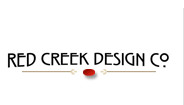Archive for January, 2009
Learning Skills: Art and Design
I have always felt that there are three sides to improving art skills or design skills. The first objective, the “Creative” side, seems to be inherited to some extent, but there are many techniques and exercises to improve creative thinking. Keep in mind, even the most creative minds hit blocks now and then. They must overcome their “blocks” as everyone does. Exercises in creative thinking are varied and sometimes kind of crazy, but usually fun!
Secondly there is “Technical Expertise”. Whether you are painting with traditional watercolors, painting digitally in Photoshop, or laying out a website in Dreamweaver, there are skills that must be learned in order to create your vision effectively. By mastering the needed skills, you can concentrate more on realizing your creative vision, and less time figuring out how to accomplish the task. Many tutorials and learning materials seem to concentrate on technical expertise. They are usually fun, but often are oversimplified. Paint this here, and draw this here, now run a curves layer and set opacity to 20%… This will help you create the particular assignment, but a huge ingredient is missing. That ingredient is: Why do you do this?
Which brings up the third objective, and to me the most important one. That would be “Theory”. Theory is the underlying knowledge of art and design. Why does glass look the way it does? Why do shadows fall the way they do? Why do colors contrast differently when placed side by side? What effects do grids have on composition? How could Seurat paint detailed paintings with nothing but strategically placed colored dots? Why is that building proportionally challenged? What color is a cloud? How does light reflect when it hits water?
My mind is racing with these questions constantly. Many can just be answered by observing the world around you. Learn to not only look at the world, but actually see it. You will get some strange looks from people when they see you staring at a rock, but I guarantee they will not understand it’s texture, color, specular highlights, shadow intensities, or it’s complexity of shape. But how can you represent one, if you do not know these details?
Another great place to look for insights into theory would be the work of other artists. Look at famous artists, of course, but also look at the work of contemporary artists. The exercise I generally employ is to observe as much art as possible from many sources. When a piece of work jumps out at me, and makes me say “Wow!” as soon as I see it, I stop and analyze the piece to see what impresses me about the work. Is it composition? Is it color? Is it texture? Why do I like it? Why, why, why?
Only by exposing ourselves to new experiences and learning from them can we grow as artists. Look at the details and try to understand the theories that make them all work. With theory and technique in your grasp, your creativity can run wild.
CSS, Fun, and Modern Browsers
Even though my business offers different services: concept design, art & illustration, and web design – it seems incoming projects will undoubtedly be for the same service at any particular time. For the last couple of months almost everything has been web design.
Thus, web design is on my mind right now. One of the projects on which I have been working, is a redesign of my blog and resource Art & Architecture. Since it is a project for myself, I have decided to design it for a minimum screen resolution of 1024 pixels wide. It looks better on a 1280×1024 resolution, and even better on the 1920×1200 resolution running on my monitor. I have taken some time to play with enhancements using the Spry Framework in Adobe Dreamweaver. I have also been messing around with jQuery. Both offer some very cool possibilities.
The content for all current projects is database driven with structural html markup, and styled with css; no tables. I have been improving my web programming skills by dropping hard earned money on reference books, and doing lots of research on the web, and one thing confuses me a little. I vowed to keep everything positive on this blog, but a little rant here, the “expert” programmers writing these references spend a lot of time talking about designing for people with ultra low res monitors, and how to create work-arounds for people using ten year old outdated browsers. The first thought that comes to my mind, why is anyone using Internet Explorer 5 for Mac? There are any number of browsers available, and they are all FREE!
So I have been testing my code on current browsers: Firefox, Safari, Opera, Flock, Avant, Maxthon, SeaMonkey, Chrome, and Internet Explorer 6, 7, 8. (If you are not using a current browser, here is your opportunity.) As I can only have one version of Internet Explorer on my system at one time, I use IE Tester for testing Explorer. Second rant for this post, as I write the code (as the “experts” instruct me), my pages work perfectly in everything except Internet Explorer 6, 7, 8. So the second stage of every page design seems to be butchering the code three different ways to get it to work in each of the three Microsoft products. And they write our operating system! Microsoft! Learn how to write a browser and quit holding back the web!
Enough said: I must dive back into a reference book and find a hack to make today’s web page work in Internet Explorer. Yeeha!
On Andrew Wyeth
I am very saddened to hear that Andrew Wyeth has passed away at the age of 91. He has long been one of my favorite artists. His most recognized work is probably “Christina’s World”, but two of my favorites are “Trodden Weed” and “Faraway”. Two books about him are presently in my library. The book “Andrew Wyeth: Memory and Magic” is a wonderful book about him, and “Andrew Wyeth: Autobiography” has an excellent collection of his artwork. I recommend them both. If you are not familiar with Andrew Wyeth, you can see his official website at AndrewWyeth.com. Some more of his beautiful work can be seen at the Museum Syndicate and on the site of Mr. Wyeth’s representative.




















